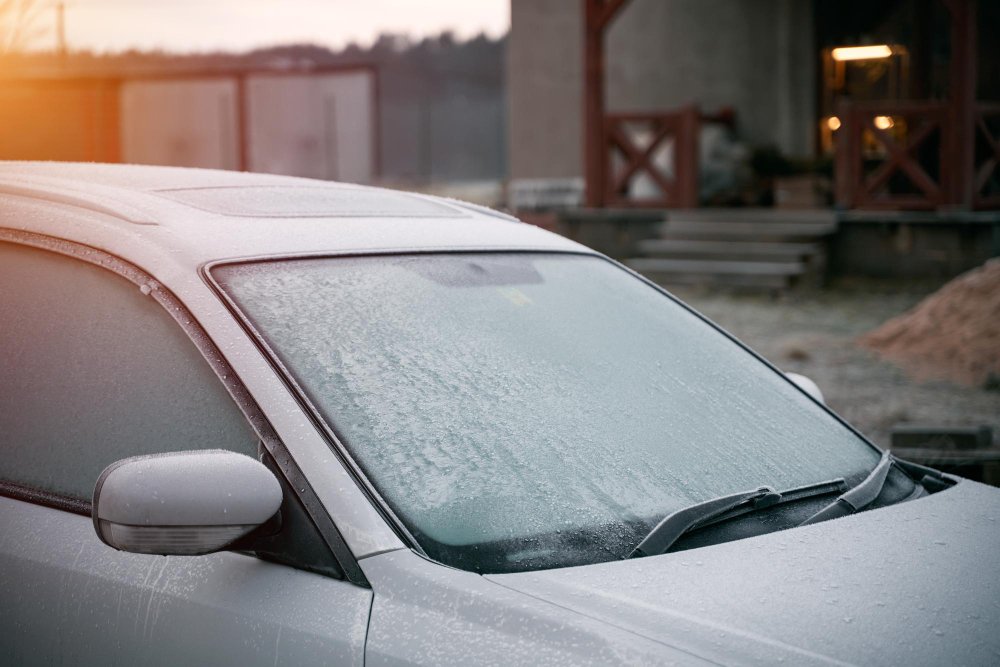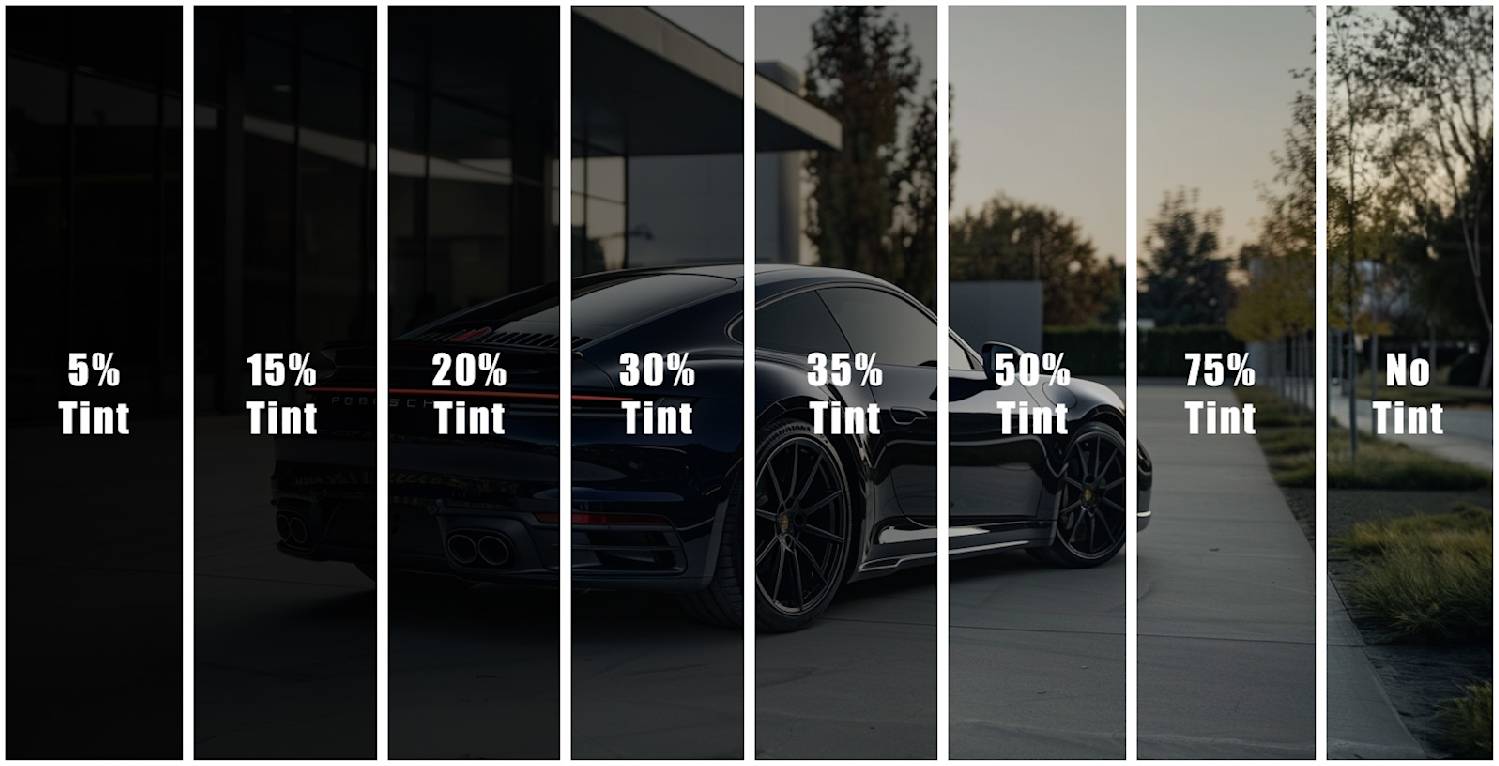Improve Your Car’s Performance and Look with Expert Window Tinting Services
Improve Your Car’s Performance and Look with Expert Window Tinting Services
Blog Article
Window Tinting Laws: What You Need to Know Before Tinting Your Vehicle
Understanding window tinting legislations is vital for any type of vehicle proprietor thinking about tinting their car. Rules differ significantly from one state to another, establishing particular restrictions for Visible Light Transmission (VLT) portions, especially for front-side home windows and windshields. Failure to abide by these regulations can result in penalties, the need to eliminate the color, and issues with insurance coverage. As you ponder enhancing your automobile's appearance and capability, it is important to comprehend not only the lawful ramifications yet likewise the functional considerations that feature picking the best tint. What variables should you prioritize in your decision-making process?
Relevance of Comprehending Color Rules
Understanding window tinting regulations is vital for lorry owners to guarantee compliance with state guidelines. These laws dictate the allowable degrees of color darkness and reflectivity, which can significantly differ from one territory to another. Failing to adhere to these guidelines can result in fines, compulsory elimination of the color, and possible problems during car examinations.
Additionally, comprehending these legislations assists car owners make informed choices concerning their tinting choices. Various types of home window films provide various benefits, such as UV defense, warm rejection, and glare reduction. Without understanding of the legal restrictions, lorry owners run the risk of choosing products that might inevitably lead to legal issues.
Additionally, recognition of tinting regulations promotes a safer driving environment. window tinting. Exceedingly dark colors can harm exposure, enhancing the risk of crashes, especially during the night or in unfavorable climate condition. Police likewise utilize these laws to make certain roadway safety, making compliance not simply a personal obligation but a legal responsibility
State-Specific Color Laws
Each state in the united state has developed its very own particular laws relating to home window tinting, showing a diverse selection of demands and criteria. These laws can vary significantly, influencing exactly how car proprietors approach setup and compliance. Some states enable darker colors on back windows while imposing stringent restrictions on front-side home windows.
Furthermore, regulations often specify allowed color materials and shades. Certain states forbid reflective colors completely, while others may enable them to a minimal level. Some jurisdictions mandate that cars with colored home windows present a sticker label indicating compliance with state laws, offering a clear identification for legislation enforcement.
Enforcement of these legislations likewise differs; some states are much more positive, carrying out random checks, while others count on complaints or noticeable offenses to launch enforcement. Lorry proprietors must understand that failure to comply with state-specific tint regulations can lead to penalties, necessary removal of illegal tints, or both.

Legal Tint Percentages
Identifying the legal tint percentages is essential for lorry owners seeking to adhere to state laws. Each state has details regulations regulating just how much light needs to travel through the windows of a car, which is expressed as a percent referred to as Visible Light Transmission (VLT) This percentage differs dramatically throughout states and can depend upon the kind of window-- front side, back side, and windscreen.
For circumstances, some states permit as little as 20% VLT on front side home windows, while others may permit up to 50%. Windscreen tinting is frequently a lot more restricted, with many territories enabling only a slim band of color on top of the windshield. In contrast, back windows typically have extra tolerant policies, with some states allowing darker tints.
It is vital for automobile owners to acquaint themselves with their regional laws to stay clear of possible lawful problems. This includes understanding exactly how VLT is measured, as it can vary based upon the sort of home window movie utilized. Remaining educated regarding these regulations makes certain compliance and promotes safe driving conditions for both the automobile proprietor and others when driving.
Effects of Non-Compliance
Failing to adhere to home window tinting laws can lead to considerable effects for lorry proprietors. Officers educated to read the full info here identify illegal tint levels may issue penalties, which can vary by jurisdiction but commonly vary from modest to significant amounts.

Insurance coverage business may likewise penalize for non-compliance, as prohibited adjustments can be checked out as a violation of plan terms. If an event happens., this might influence insurance coverage prices or lead to issues in insurance claims.
Eventually, the consequences of non-compliance prolong beyond immediate punitive damages; they can influence a motorist's insurance prices, lawful standing, and overall car value, stressing the significance of adhering to neighborhood home window tinting guidelines.
Tips for Picking Tinting Options
Understanding the implications of non-compliance highlights the value of making notified choices when picking window tinting options. Acquaint on your own with your state's certain laws pertaining to tint darkness and reflectivity. Each state has one-of-a-kind guidelines that dictate the allowable limits, so guarantee you stay within these standards to avoid fines.
Secondly, consider the sort of color material. Alternatives include colored, metalized, and ceramic tints, each offering varying degrees of heat being rejected, UV protection, and durability. Ceramic colors give superior warm resistance without interfering with electronic devices, making them a popular option.
Additionally, assess your main function for tinting. If you seek boosted personal privacy, go with darker tints; nevertheless, remember that this may impact presence at night. On the other hand, if glare reduction and UV security are your major problems, lighter tints may suffice.
Last but not least, speak with an expert installer who is experienced concerning neighborhood guidelines and can suggest high-quality materials fit to your requirements (window tinting). Taking these aspects right Visit This Link into account will certainly guarantee you make a well-informed decision, ultimately improving both your car's appearances and performance
Conclusion
In conclusion, knowledge with window tinting laws is essential prior to using tint to a vehicle. By recognizing legal needs and choosing suitable color materials, vehicle proprietors can achieve visual enhancement while remaining certified with relevant legislations.
Understanding home window tinting regulations is necessary for any car proprietor thinking about tinting their auto.Comprehending home window tinting laws is vital for vehicle owners to make certain compliance with state guidelines. Some states allow darker colors on back windows while imposing stringent restrictions on front-side windows.
In contrast, rear home windows typically have a lot more lenient guidelines, with some states allowing darker colors. (window tinting)
In conclusion, experience with home window tinting laws is vital prior to using tint to an automobile.
Report this page